As we approach late summer, take a closer look at four male bumblebees you could encounter across the North East.
As we approach the end of summer, many bumblebee nests are coming towards their end. Inside the nest, the queen will switch to producing new queens and males. Males leave the nest and never return, their sole purpose to disperse and find a new queen to mate with. Back at the nest, the old queen and workers reach the end of their natural lifespan. New queens will tuck themselves away for the winter in loose soil, emerging the following spring to start her own nest. Nests of some bumblebee species can last through to autumn, such as the Common Carder Bee, and one species, the Buff-tailed Bumblebee, can even establish a winter-active nest. The latter owing to a changing climate and availability of winter flowering garden plants in urban areas.
In July and August, male bumblebees are out in force and are often found on open flower heads where they can both rest and feed, such as knapweeds and thistles. Unlike queens and workers, males play no part in collecting pollen and so have hairy hind legs owing to the absence of a pollen basket. Males also have longer, more curved antennae and longer, shaggier hair. The former enhances the ability to detect new queens while the latter is to keep warm in late summer rain spells. Males of some species are also very yellow, with yellow facial hair that resembles a ‘moustache’.
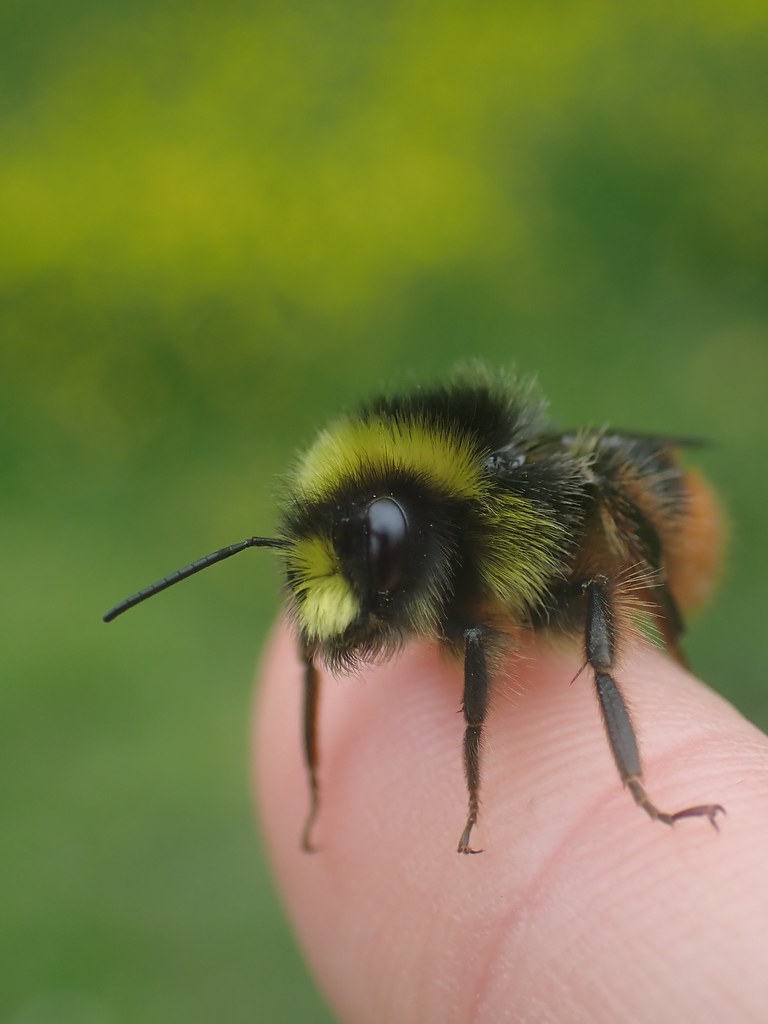
Male Red-tailed Bumblebee with yellow ‘moustache’ © Charlotte Rankin 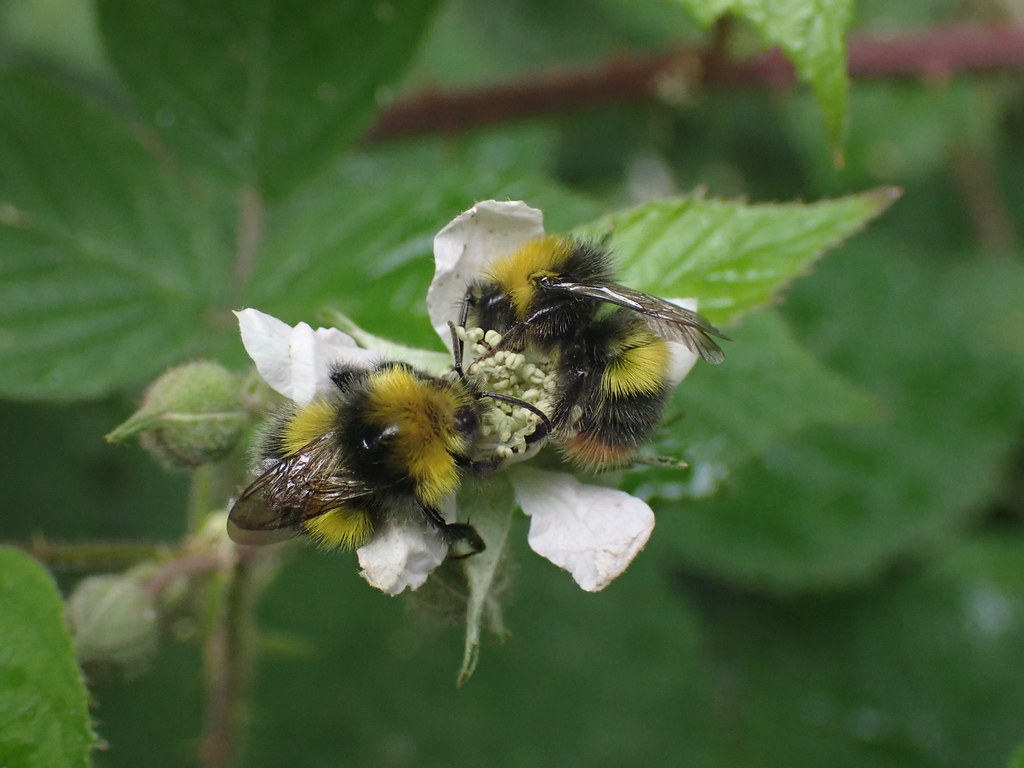
Male Early Bumblebees © Charlotte Rankin
Male bumblebees to look out for
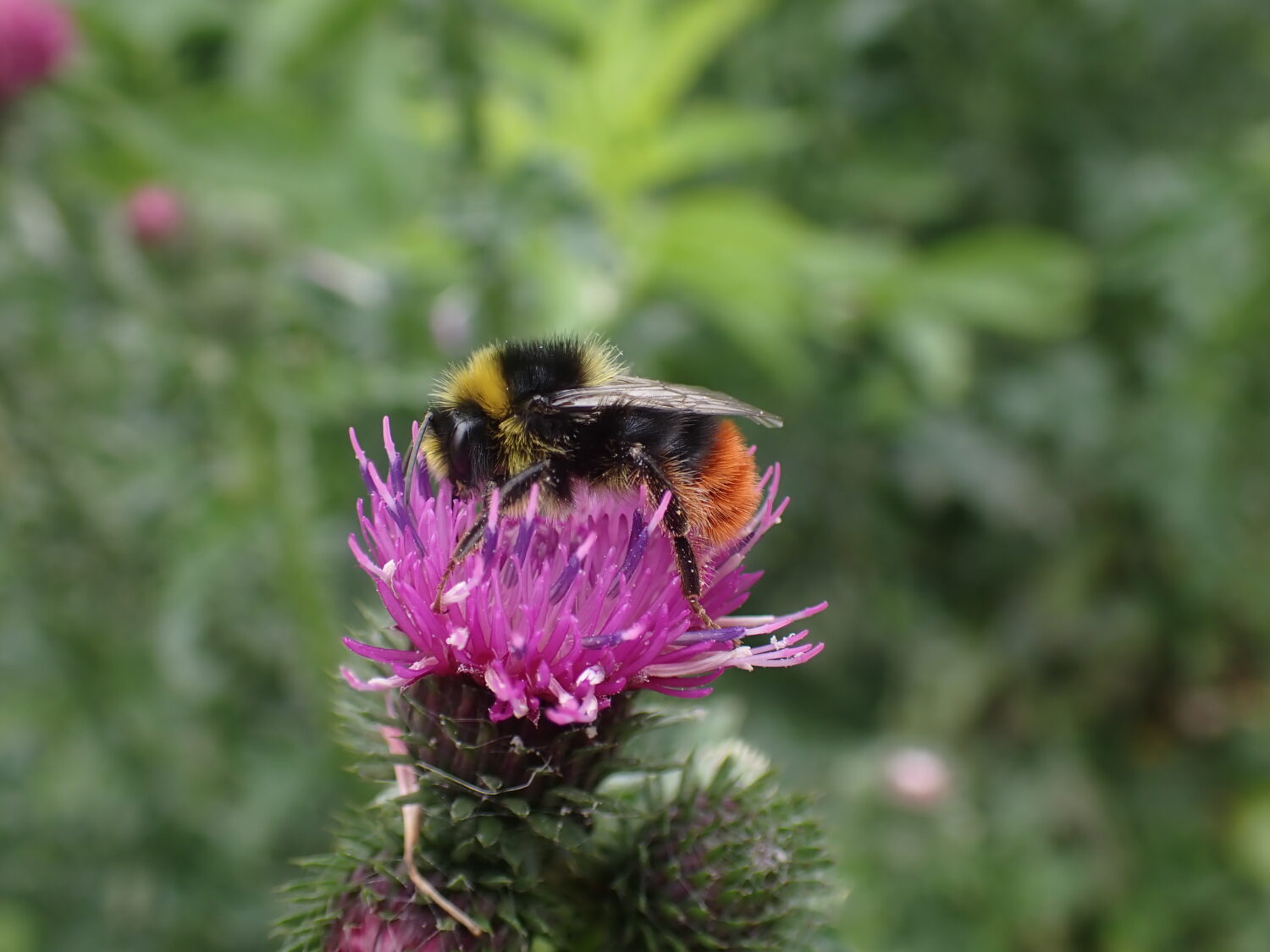
Red-tailed Bumblebee
Male Red-tailed Bumblebees have a red tail that often fades to orange-red due to sun exposure.
Unlike queens and workers of this species, males have yellow hair banding. A yellow band is present behind the head and at the bottom of the thorax.
Males are also one of three common species to have distinctive yellow facial hair or a yellow ‘moustache’.
The Garden Bumblebee is one of the North East Bee Hunt’s target species. Discover more about this bumblebee here.
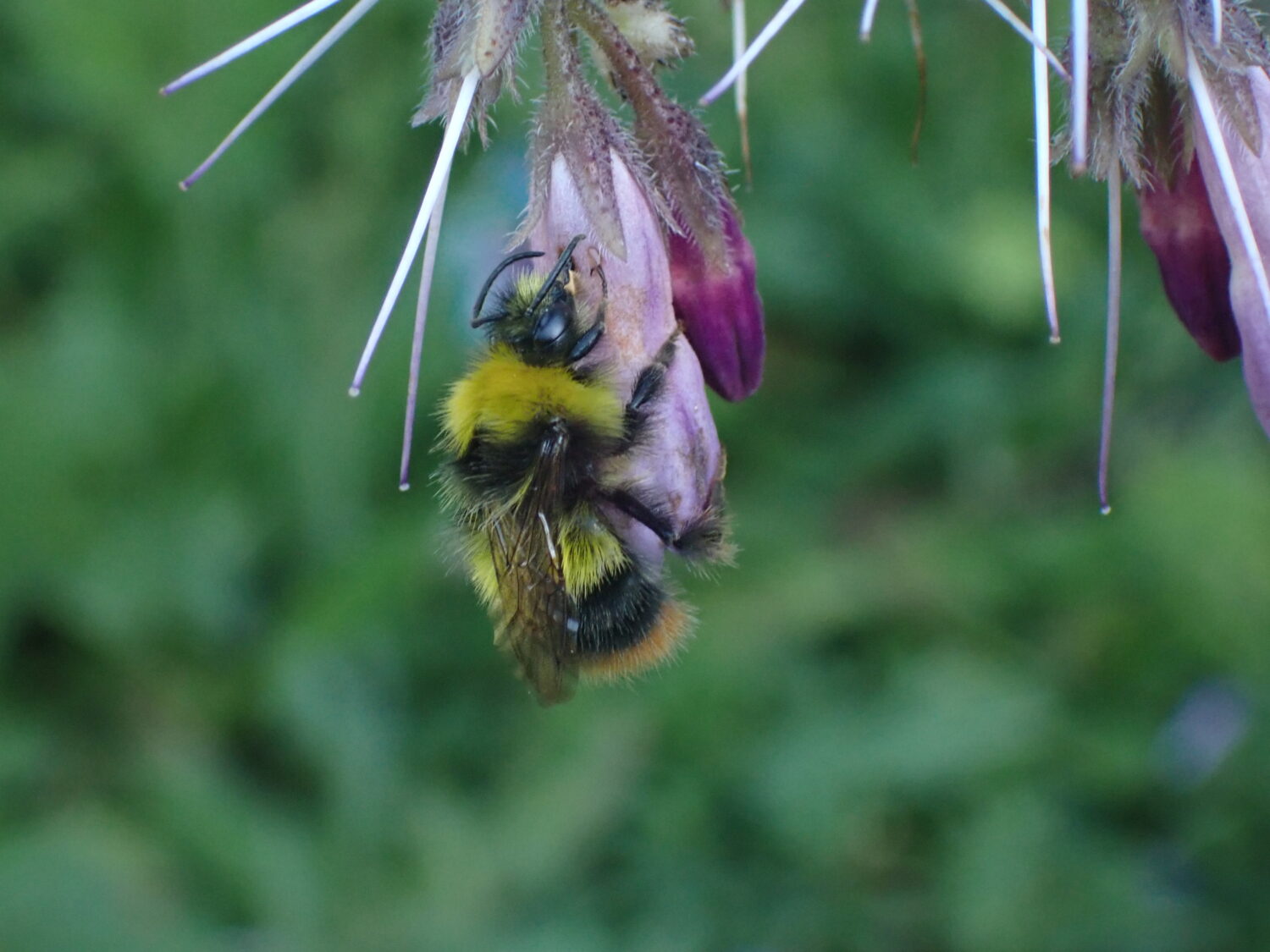
Early Bumblebee
Male Early Bumblebees have a small, orange-red tail.
Males are extensively yellow, with a broad yellow band behind the head and on the abdomen. Males are also one of three common species to have a distinctive yellow ‘moustache’.
Often confused with males of Red-tailed Bumblebees, Early Bumblebees are more extensively yellow and rounder in appearance.
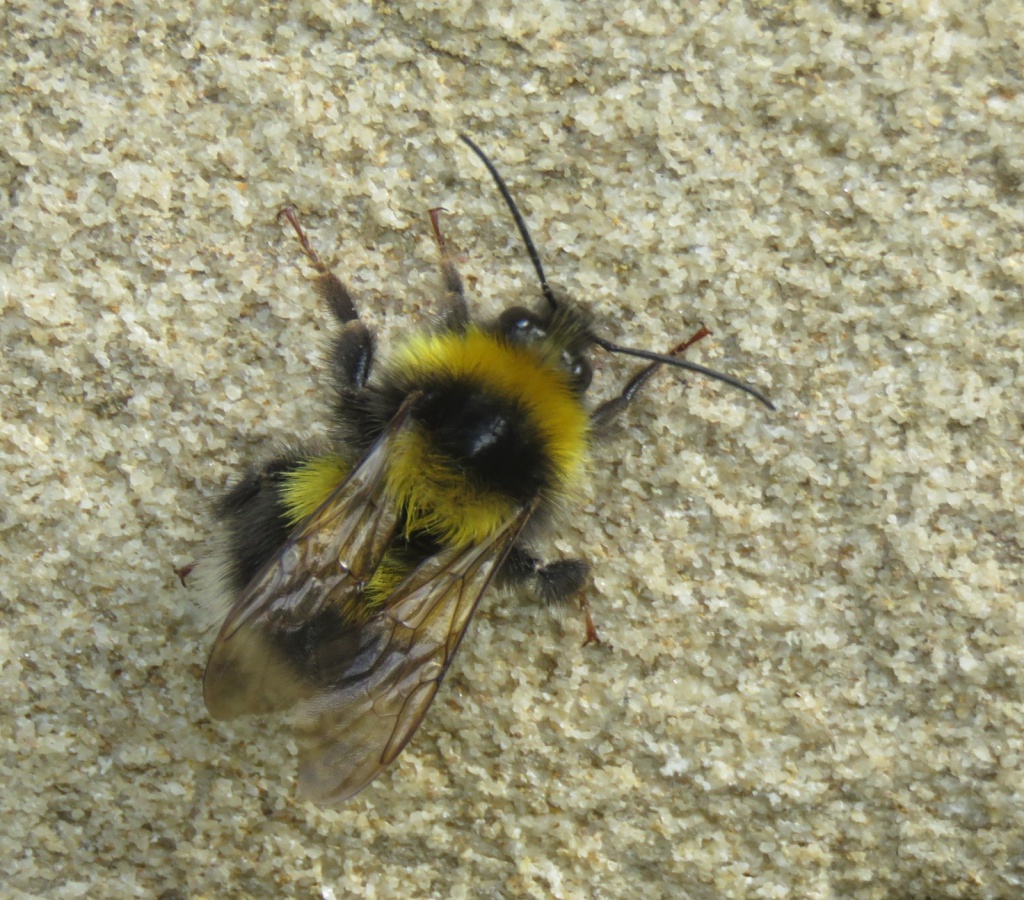
Garden Bumblebee
Garden Bumblebee males have the same pattern as queens and workers. A white tail with a yellow midriff band and a yellow band behind the head.
Unlike females, male Garden Bumblebees often have a yellow tuft of head on the head and much longer, curved antennae.
The Garden Bumblebee is one of the North East Bee Hunt’s target species. Discover more about this bumblebee here.
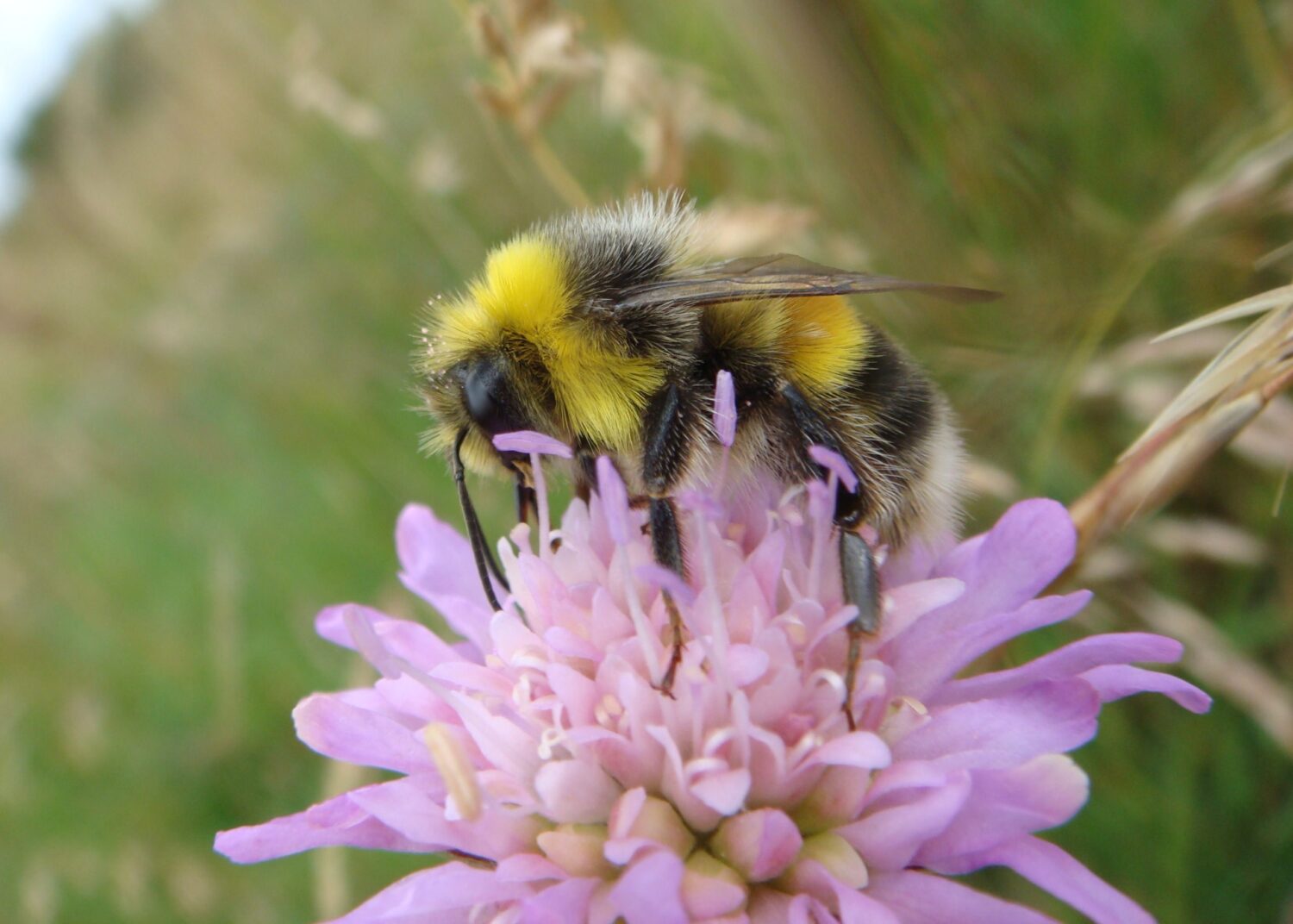
White-tailed Bumblebee
White-tailed Bumblebees have a white tail with yellow banding.
Males of the White-tailed Bumblebee can be extensively yellow, with yellow hairs often covering most of thorax and abdomen. As a result, they can often appear as very bright bumblebees.
Also look out for the male’s yellow facial hair or ‘moustache’.
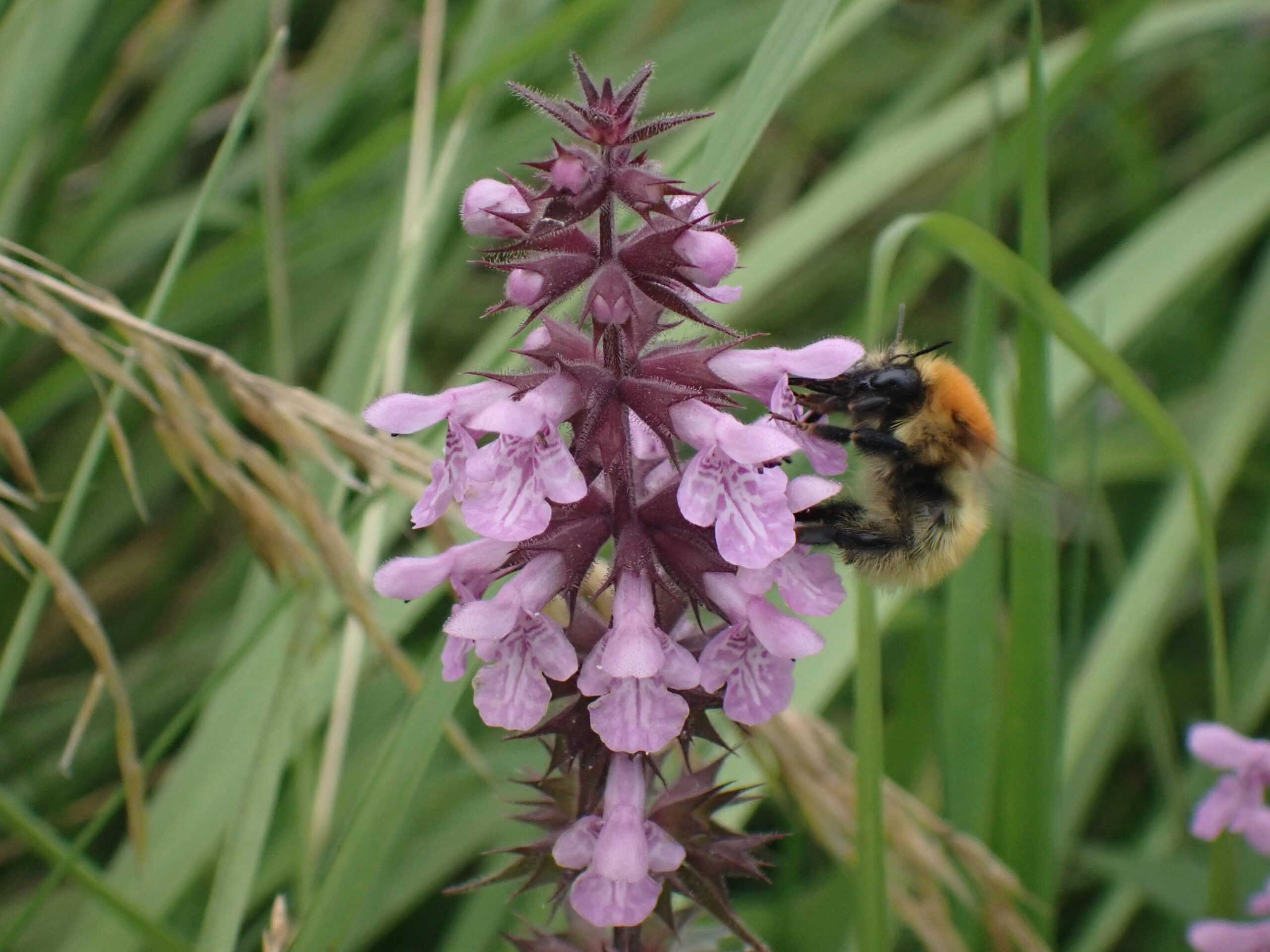
Join the North East Bee Hunt
Urban or rural, beginner or expert, we need your help to record bees across the North East this spring and summer.
Your records can add to our understanding of bees in the region and inform conservation and monitoring efforts.
Taking part is easy and every record counts, wherever you live in the region. Records of all bee species are encouraged.